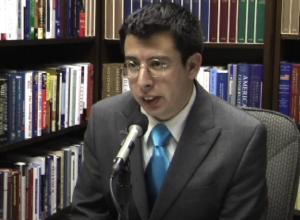Nearly 5,000 U.S. cities and counties in 17 states, encompassing more than 23 million Americans, impose a local income tax. The local income taxes in these 4,943 jurisdictions provide a longstanding and significant source of revenue to many cities in “Rust Belt” states in the northeastern United States.
All counties in Indiana and Maryland impose a local income tax. In Ohio, 593 municipalities and 181 school districts have such a tax. In Pennsylvania, 2,469 municipalities and 469 school districts impose local income or wage taxes. Many cities and school districts in Iowa and Michigan also have these taxes.
Over the past few decades, however, the number of local income taxes has declined, and although there are exceptions, the rates at which these taxes are imposed have dropped as well.
For example, Philadelphia’s wage tax in 1995 was 4.96 percent for residents and 4.31 percent for nonresidents. It has gradually dropped to the current 3.928 percent for residents and 3.498 for nonresidents, and further cuts are expected in the medium to long term.
In New York, the State Senate voted in June 2011 to exempt small businesses from the citywide 0.34 percent Metropolitan Transportation Authority (MTA) payroll tax and phase it out completely by 2014.
Remnants of Great Depression
Local income taxes arose during the Great Depression: Declining property tax revenues caused by rising foreclosures forced local governments to look for other ways to raise revenue. The first local income taxes emerged in Philadelphia in 1939 as the city sought to avoid bankruptcy. They spread gradually to select cities in Ohio (1946), Kentucky (1947), Missouri (1948), and Michigan (1962). New York City and Baltimore adopted municipal income taxes in 1966.
Income and wage taxes are generally applied to those who live or work in the affected jurisdiction. They can complement or replace other local revenue sources such as property, business, sales, or tourist taxes. Unlike property taxes, local income taxes can also be applied to nonresidents. If abused, however, local income taxes could enable a jurisdiction to export its tax burden to nonresidents who are not the primary beneficiary of city- and county-provided services such as schooling, policing, parks, and social services.
In most cases, city officials understand this need to avoid taxation in excess of benefits provided, and they impose a lower rate on nonresidents than residents. In Maryland, for example, county and city income taxes range from 1.25 percent to 3.20 percent, but nonresidents pay a uniform rate statewide set at the lowest county rate (1.25 percent). Cities in Michigan and Pennsylvania generally impose income and wage taxes on nonresidents at a lower rate than residents, although Ohio communities generally impose the same rates on both groups.
Variety of Local Income Taxes
Local income taxes appear under a variety of designations: wage taxes, income taxes, payroll taxes, local services taxes, and occupational privilege taxes. They are generally paid by the employee but withheld by the employer, although in some cases (as in San Francisco, California and Portland, Oregon), they are paid directly by the employer.
Some are imposed as a percentage of salaries or wages, others are stated as a percentage of federal or state tax, and still others are flat amounts charged to all workers.
Two West Virginia cities, for example, impose a flat charge of $2 or $3 per week on all those employed in the city. Appanoose County, Iowa—alone among Iowa counties—imposes a 1 percent emergency services surtax. Residents of Yonkers, New York pay 15 percent of their state tax as a “piggyback” local tax.
Like federal and state income taxes, some local wage taxes have provisions for exemption, such as excluding military income or low-income individuals.
In Maryland and New York City, residents pay their local income tax when they file their state income tax. However, there are examples of extreme compliance burdens associated with local income taxes collected by local authorities. For example, taxpayers in Albion, Michigan, must fill out a city income tax form of 16 pages, with instructions, separate from state and federal income tax forms.
Joseph Henchman ([email protected]) is vice president for legal and state projects at the Tax Foundation.




